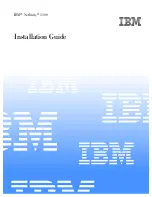
SYSTEM CONFIGURATION GUIDE
–
NEC Express5800/R120g-2M
NEC Corporation
Revision 3.0
– October, 2016
20
4 Internal Hard Disk Drives
4.1
RAID Configuration
Refer to the section in accordance with your OS and RAID configuration. For example, when you would like
to configure RAID 0/1/10 1GB cache with Windows Server 2012 R2, refer to the section 4.2.2 for the
required components and then refer to the section 4.3.2 for the hard drives.
Operating System
Supported RAID configuration
Supported
HDD/SSD
RAID and Cache
Section
Windows Server 2008 R2
VMware ESXi 5.5
VMware ESXi 6.0
Non-RAID (Embedded SATA)
4.2.1
4.3.1
RAID 0/1/10 1GB Cache
4.2.2
4.3.2
RAID 5/6/50/60 1GB Cache
4.2.3
RAID 5/6/50/60 2GB Cache
4.2.4
Windows Server 2012
Windows Server 2012 R2
Red Hat Enterprise Linux 6
Red Hat Enterprise Linux 7
Non-RAID (Embedde SATA)
4.2.1
4.3.1
RAID 0/1/10 1GB Cache
4.2.2
4.3.3
RAID 5/6/50/60 1GB Cache
4.2.3
RAID 5/6/50/60 2GB Cache
4.2.4
NOTE:
Up to four hard drives can be installed in the Embedded SATA configuration.
All drives within a RAID array should be of the same type, capacity and rotation speed.
Up to two kinds of drives selected from SAS 10K HDDs (512n), SAS 10K HDDs (512e), SAS 15K
HDDs, SATA HDDs, SAS SSDs, SATA SSDs (ME) and SATA SSDs (VE) can be mixed in each drive
cage.
It is recommended to set RAID array configuration drives less than eight per disk group in order to
minimize the risk of becoming multiple hard drives failure.
To configure a large-capacity RAID array, it is recommended to configure in RAID 6 or RAID 60 in
order to minimize the risk of becoming multiple hard drives failure during the RAID rebuilding process.
















































